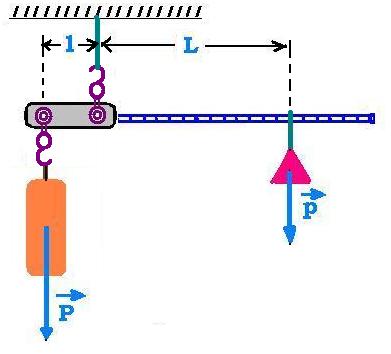Roman balance
Description:
A Roman balance or steelyard balance is used to weigh object of weight P as
shown in the figure. It consists of two arms with different lengths l and L; and a counterweight
of weight p which can be displaced along the graduated longer arm in order to counterbalance the load P
and indicate its mass. All is suspended from a fulcrum.
Measurements:

Static equilibrium for this rigid body is expressed by the zero of
the net external torque, That is Στext = 0.
For the Roman balance, this condition is reduced to the law of the lever.
Once the two arms are balanced about the pivot, the net torque of the system about
the fulcrum is null.
Hence, the law of the lever gives:
( + p x L) + ( - P x l) = 0.
Which gives, according to P = M x g and p = m x g:
M = ( m x L)/l = (m/l) x L = Constant x L
For example:
m = 2.0 kg and l = 0.20 m; then Constant = 2.0/0.20 = 10.0 kg/m
An indication of 0.80 m on the graduated arm gives 8.0 kg for the mass
of the load P. A steelyard of 10.0 kg for the counterweight gives 80.0 kg.
Amazing device invented centuries B.C.
The Scientific Sentence © 2007. All rights reserved. |